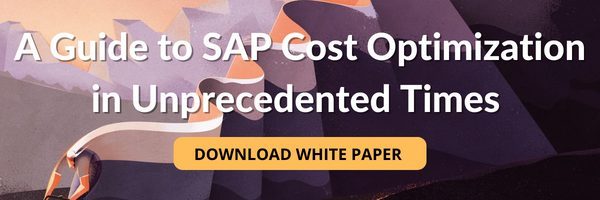- Chip Hanna
- Reading Time: 3 minutes

As 2024 comes to a close, you are likely starting to plan for your 2025 IT vendor strategy to ensure you maximize value in your vendor relationships. However, for some, you may be in the position to negotiate with SAP as the year-end approaches. If you are considering an SAP year-end deal, keep these four key strategies in mind.
1. Establish Internal Alignment
Before you set up a discussion with your SAP representative, it is crucial that all your internal stakeholders are on the same page and are fully committed to doing a deal with SAP. This includes not only the folks who will execute the negotiation but also the equally important individuals or departments who will fund the transaction.
As a part of your preparation, ask everyone involved if they are “all in”. If there is anyone who is more of a “meh” than a “yeah”, you need to stop until there is complete consensus to get an SAP deal done. The last thing you want to do is to ramp up a sales cycle into high gear so late in the year, just to let it wither and die as it languishes in your internal review spin cycle. There aren’t too many other moves you can make to negatively impact your credibility and relationship with SAP.
2. Be Clear on What Deal is on the Table
Crisply communicating the size and scope of the deal as a part of your first communication with SAP is critical. One of SAP’s standard sales practices is to include more volume and/or products beyond the ask. Well-informed customers who know how to express their demand in SAP’s vernacular, in terms of SAP’s metrics and the products, will avoid confusion and save time.
SAP’s products and the method they use to license them vary and change over time. In addition, there may be situations where an incremental purchase may trigger other requirements which may not have been originally contemplated with a “simple” purchase (e.g., HANA Runtime could be required with an incremental purchase). Going into that discussion fully educated and confident of what the deal should look like coming back from SAP will expedite the process of evaluating the accuracy of SAP’s proposal.
3. Leverage the Deal to Address Your Overall Commercial Relationship
Beyond landing a deal that meets your requirements for use, scope, and price, SAP customers should take the opportunity to determine if the benefits of a year-end purchase can extend beyond just the software. Oftentimes, customers have elements of their commercial relationship which have been sub-optimized (such as not having future price protections) or are inconsistent/absent across their entire SAP portfolio.
As an informed customer, you will be able to leverage a transaction to revisit key commercial terms and standardize key elements of the contractual matters if you understand the parameters of a deal which can trigger those discussions. Ultimately, this could improve the flexibility and predictability of your overall relationship.
4. Set Reasonable Expectations for the Results
It is clear SAP has taken a beating in the market by resetting expectations with the investor community and failing to deliver the results previously promised. However, customers who sit at the table with SAP believing they are going to negotiate a deal that costs just a little more than free are not only going to be disappointed, but they will also lose credibility.
SAP is still a viable company with a huge dedicated (or highly dependent) customer base who are not ripping out their SAP platforms anytime soon. However, SAP has recently demonstrated a willingness to provide more creative deal constructs to address some of the flexibility issues and business practices which have frustrated customers and, in certain cases, resulted in customers deferring purchases or holding their noses and doing a deal simply because they had to.
If you understand the areas where SAP has recently gone beyond their standard playbook, you can approach a year-end deal with more confidence in your ability to achieve an agreement which not only meets your requirements but takes advantage of SAP’s willingness to do less of the same. This can make your year-end negotiation feel less like an ordeal and more like a mutually beneficial transaction.
With these four strategies in mind, you’ll be well-positioned to obtain the best possible outcome if you sit down with SAP over the next few weeks to conclude a deal. Obtaining SAP pricing and commercial term benchmarks and leveraging an experienced third-party like UpperEdge who has guided SAP customers through year-end transactions can further improve your ability to negotiate the best deal in a timely manner.
If you are struggling to create a robust strategy for your year-end SAP deals, UpperEdge can help. Explore our SAP Advisory Services to learn how our expert advisors help clients achieve competitive deals with SAP.
